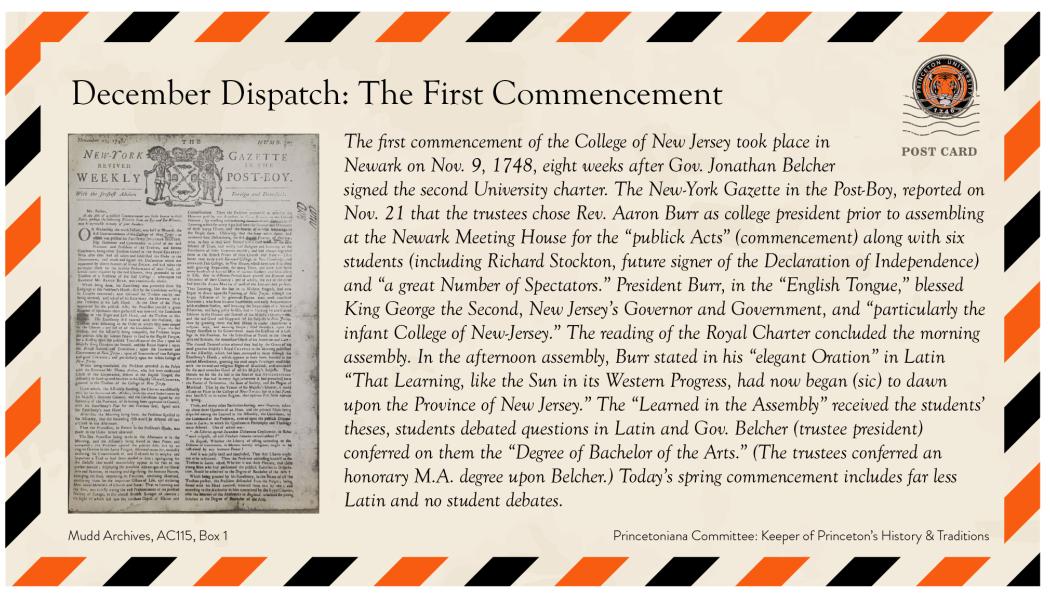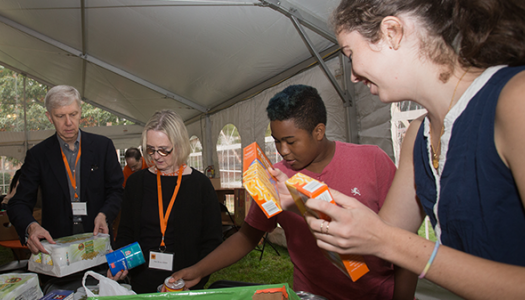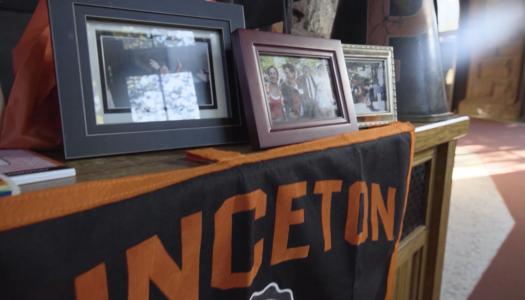
Do you know which building on campus was the first to be named for a woman?
Why did the College of New Jersey (ultimately Princeton University) move to Princeton from Newark?
Where was Picasso’s first home for “Head of a Woman,” and when did it move?
“Postcards to Alumni“ is a collection of monthly digital postcards featuring unique facts about Princeton’s history. The postcards were introduced in December 2022 by the Alumni Council’s Princetoniana and Communications and Technology (CAT) Committees who collaborated on the project.
December’s postcard about ”The First Commencement“ was just released:
The first commencement of the College of New Jersey took place in Newark on Nov. 9, 1748, eight weeks after Gov. Jonathan Belcher signed the second University charter. The New-York Gazette in the Post-Boy, reported on Nov. 21 that the trustees chose Rev. Aaron Burr as college president prior to assembling at the Newark Meeting House for the ”publick Acts“(commencement) along with six students (including Richard Stockton, future signer of the Declaration of Independence) and ”a great Number of Spectators.“ President Burr, in the ”English Tongue,“ blessed King George the Second, New Jersey’s Governor and Government, and ”particularly the infant College of New-Jersey.“ The reading of the Royal Charter concluded the morning assembly. In the afternoon assembly, Burr stated in his ”elegant Oration“ in Latin ”That Learning, like the Sun in its Western Progress, had now began (sic) to dawn upon the Province of New Jersey.“ The ”Learned in the Assembly“ received the students‘ theses, students debated questions in Latin and Gov. Belcher (trustee president) conferred on them the ”Degree of Bachelor of the Arts.“ (The trustees conferred an honorary M.A . degree upon Belcher.) Today’s spring commencement includes far less Latin and no student debates.
The postcards are being shared monthly with alumni around the globe via numerous digital channels.
“Our work as a committee is not only about collecting and archiving history, memorabilia and traditions but also how to share it and engage alumni,” said Jean Hendry *80, former chair of the Princetoniana committee, who is leading this initiative. “We brainstormed projects that would enable us to connect with alumni on a regular basis. At the same time, we didn’t want a project that caused alumni to have to do anything other than feel a connection to the University. ’Postcards‘ seemed to fit the bill.”
To research and collect the facts, Hendry tapped the Princetoniana committee. While Princetoniana members are experts in Princeton history and traditions, they leaned on the CAT Committee’s expertise in technology to help design the digital postcards. Credit for the initial postcard design belongs to CAT Committee member Cindy Drakeman ’02 who sourced images, conceived the nostalgic postcard look and “stamp” designs, suggested using “Dispatch” on the postcard to lend a nostalgic feel, and created many of the postcards. Credit goes to Princetoniana committee member Tom Swift ’76 for designing the initial postcard.
“We were so happy when Princetoniana approached us with the postcard idea,” said Michael Lin ’13, former vice chair of the CAT Committee. “The pandemic brought on an increase and a need for digital communication and initiatives, and this is a great one, much like Orange & Black Day that our committee helped introduce last year. ’Postcards‘ provides yet another opportunity to engage with alumni across the world and share the love of Princeton, while also bringing awareness to the great resource of Princetoniana and its museum.”
“Postcards to Alumni” will appear as a monthly feature in Tiger News and on @PrincetonAlumni social media channels. The postcards will also be archived in the Princetoniana virtual museum.


